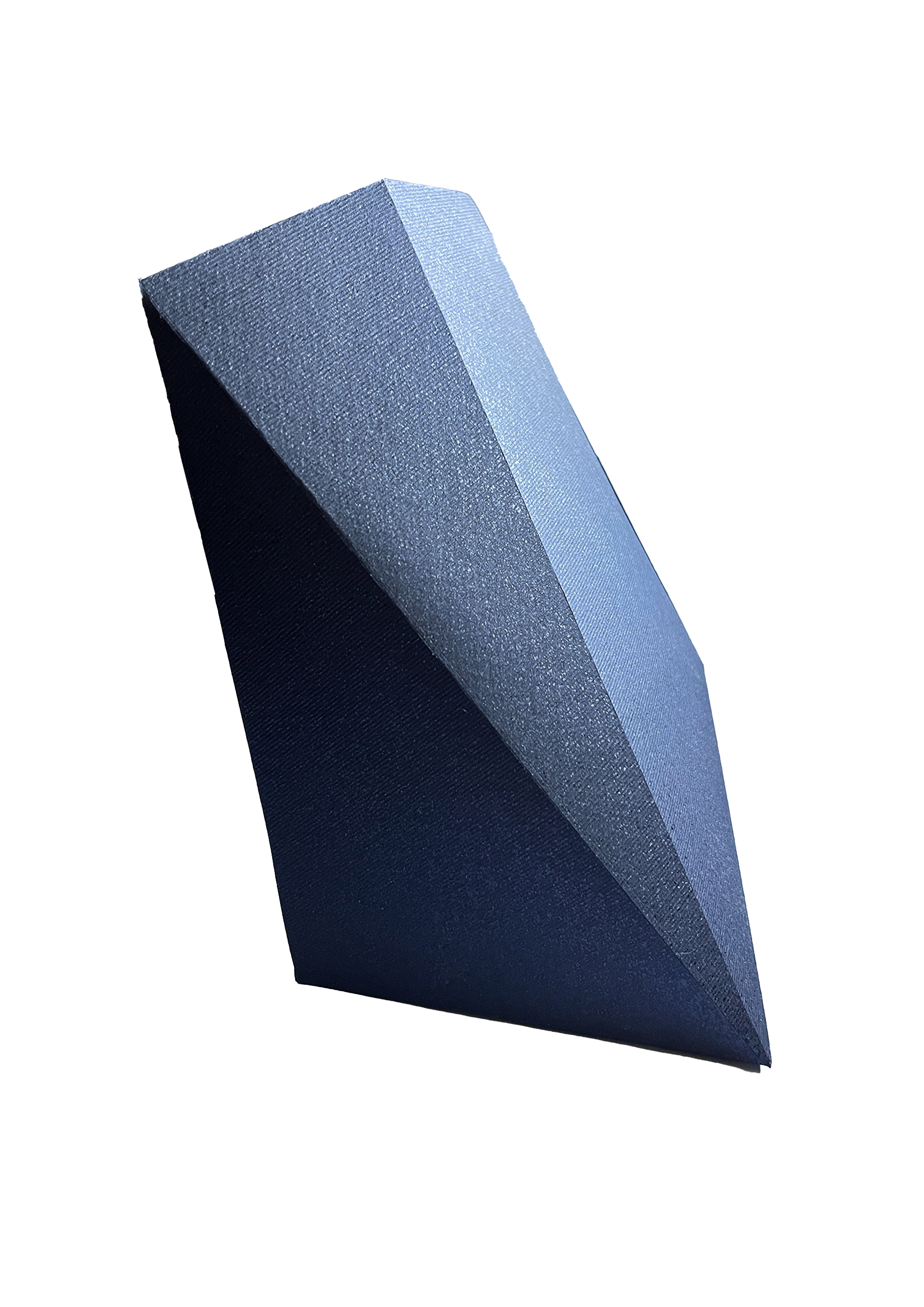


I’m very passionate about exploring the intersection of art and technology. By deepening my understanding of new algorithms and generative art creation techniques, I’m seeking to expand my knowledge and push the boundaries of what is possible with digital art. The goal for this semester is to combine generative artwork with a fresh coding algorithm, and hope to delve into new and innovative ways of generating art. This is a great approach because it allows for experimentation and creativity, which are essential for producing unique and compelling art.
Furthermore, I’m interested in machine learning, which is a rapidly evolving field that has the potential to transform many industries, including art. By incorporating machine learning techniques into my work through a series of workshops, I could potentially create art that responds dynamically to changes in the environment or even to human interaction.
My interest in machine learning demonstrates my curiosity and willingness to explore new medium and incorporate them into my future artistic practice. By embracing new tools and techniques, I hope to create truly innovative and groundbreaking art that pushes the boundaries of what is possible in the art world.


Our daily lives have become deeply intertwined with technology, and we rely on it extensively for our various needs and habits. However, most of us are not actively involved in the development of technology. As an upcoming designer and creative, I've participated a series of workshops during this productive semester. Throughout this semester, I have attended four different workshops covering a range of topics including Creative Coding, Projection Mapping, Making, and Physical Computing. I have collaborated with small teams of up to three people, as well as work independently, to create various process documentation and deliverables. Through these workshops, I have gained more proficiency in code literacy in the digital age, by combining and alternating computational design and new algorithms. Overall, I feel that I have become more involved and have developed a greater level of competence and experience in these areas.




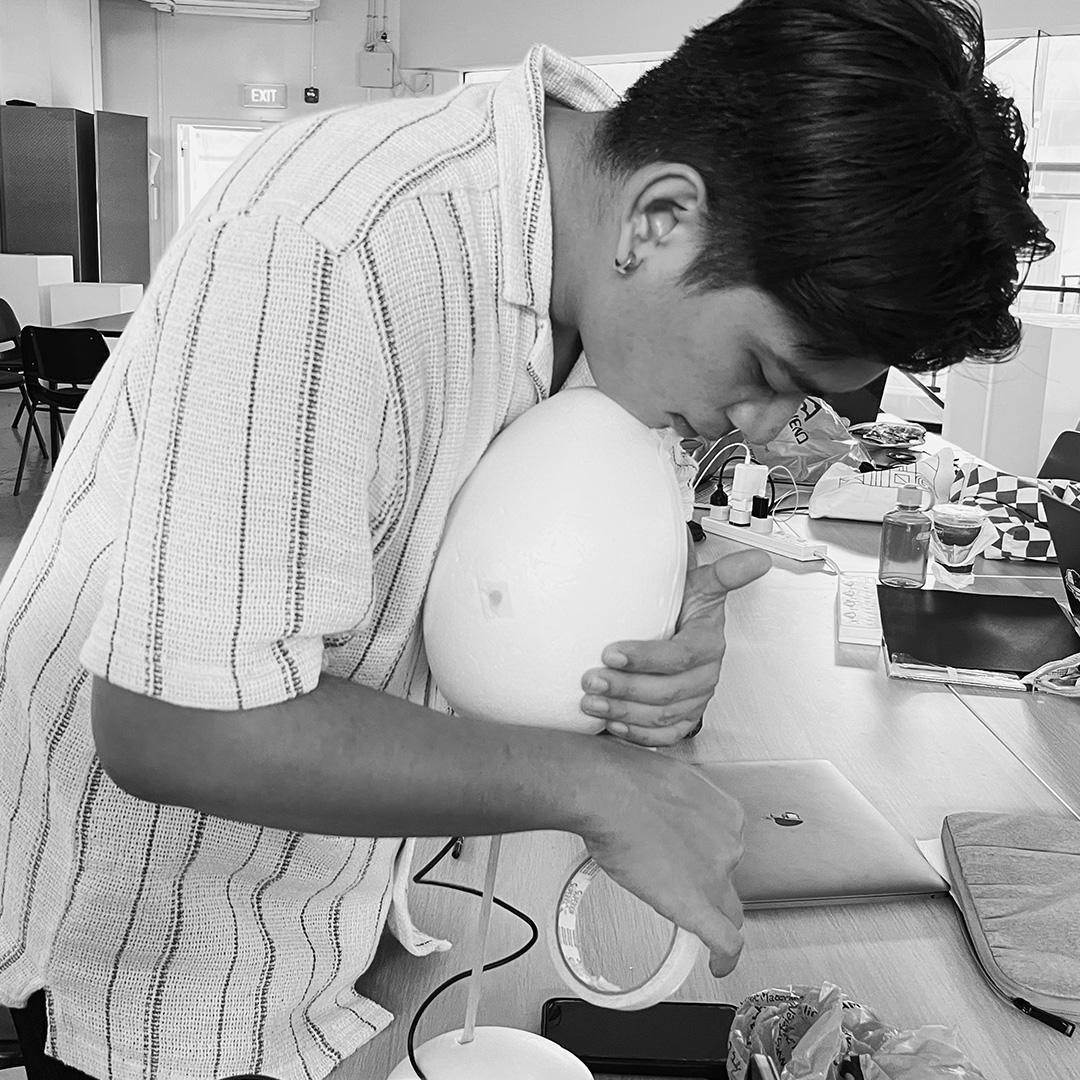


Andreas’s workshop on 'Coding' explores the innovative use of code in the design process. We are taught how to use simple code to create various forms of generative visual imagery that can be static, dynamic, or interactive. Personally, I was intrigued by the idea of representing sounds through data collection and abstract visuals. I enjoy spending time outdoors and often seek out activities that offer an escape from my mundane routine. Nature has become their preferred avenue for this data collection process.
During this workshop, Me and my team analyzed the sounds collected from Clementi Forest and adjusted the sensitivity of the code to react to the raw nature sound using a provided template. The experience was enlightening, especially when seeing our team's collaboration resulting in a range of artwork generated through coding. We were inspired by the power of teamwork in fostering communication and the creation of different coding outputs. The workshop expanded our skill set, allowing us to apply code creatively in this exciting new medium.
Tools used: Voice Memo, P5js and Ableton Live







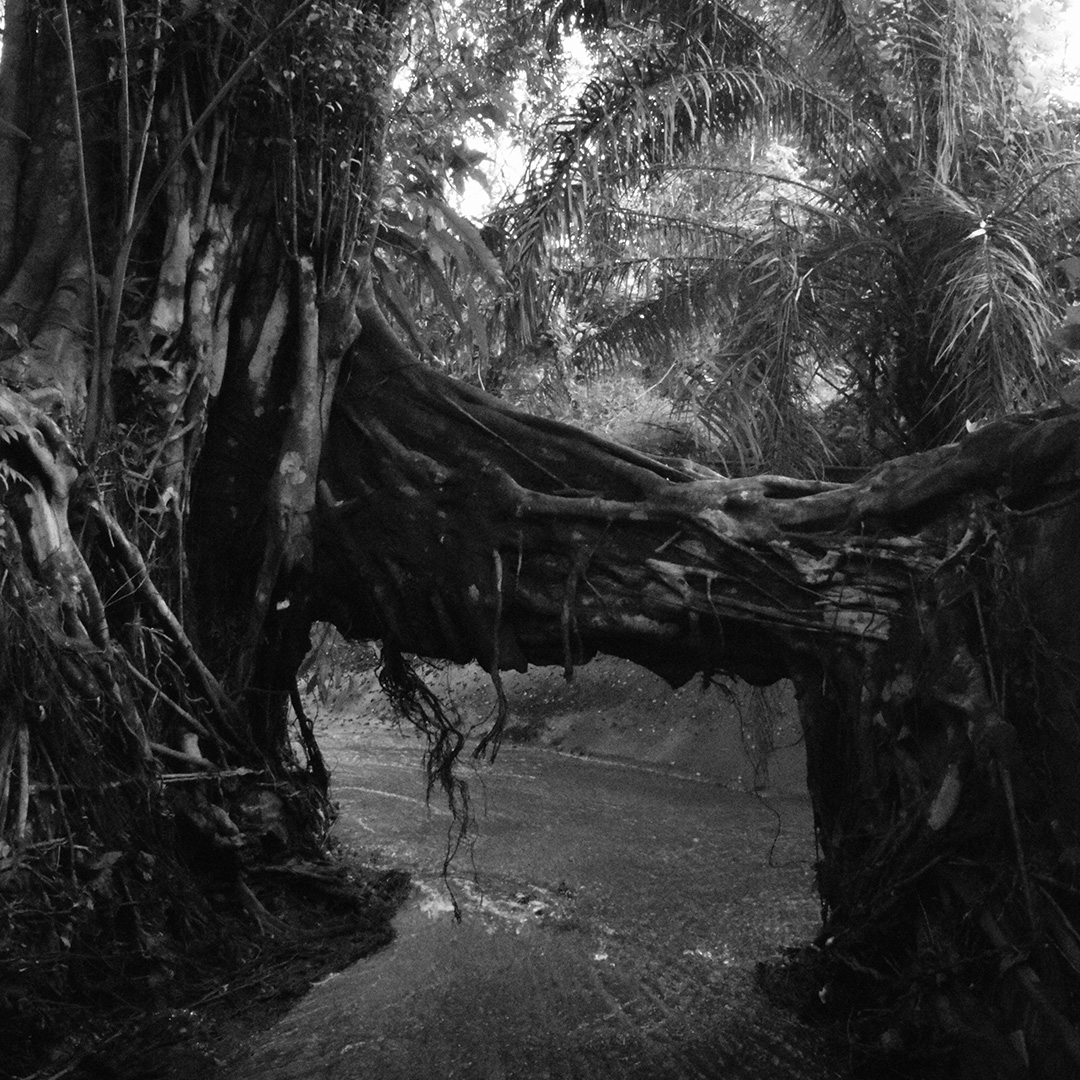
'Making' worshop by Dhiya gave us the opportunity to look at how we can utilise coding algorithms to create something physical. I was exposed to new software and craft techniques to develop something 3 dimensional. The instruction given was simple and using tools like blender helps me to visualize my model easily. I’ve also tried to render to experiment with materials. It definitely intrigued me by how we can turns coordinates into something that’s well crafted. This workshop also focus on documenting our physical object.
I’ve always incorporate some narrative in my design process and I delve into the concept of deconstructivism, to showcase the beauty of unpredictability, similar to how algorithm allow us to create unique outputs. Overall this workshop was a good understanding of this workflow of transforming something digital to physical print and object. Something that particularly stood out to me was how the coding algorithm could be applied in both physical and digital contexts, making it a versatile and multifunctional tool. I was impressed by how this approach allowed us to translate abstract concepts into tangible models.
Tools used: Blender, 120gsm Black And White Paper, Pen Knife, Metal Ruler and Double Sided Tape





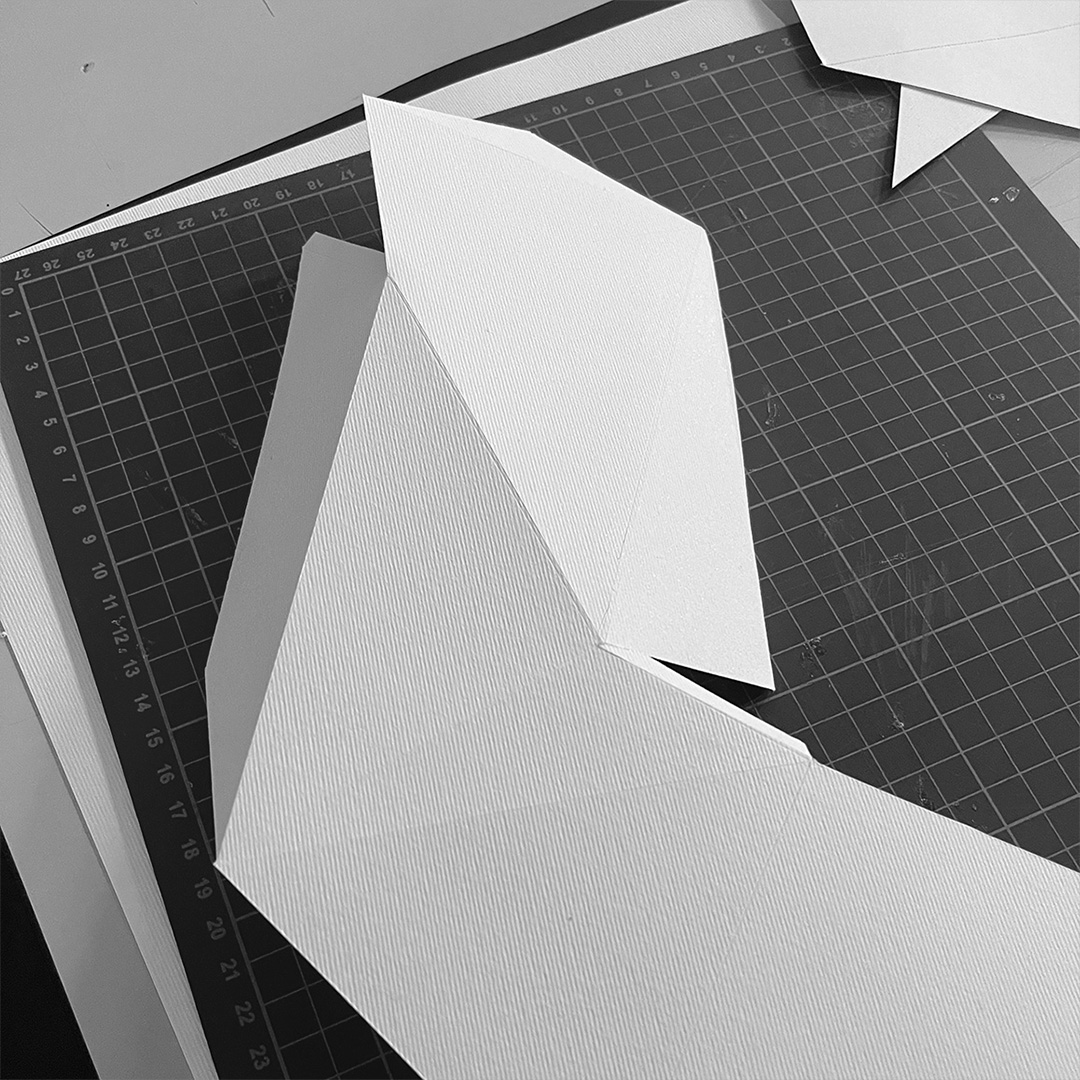


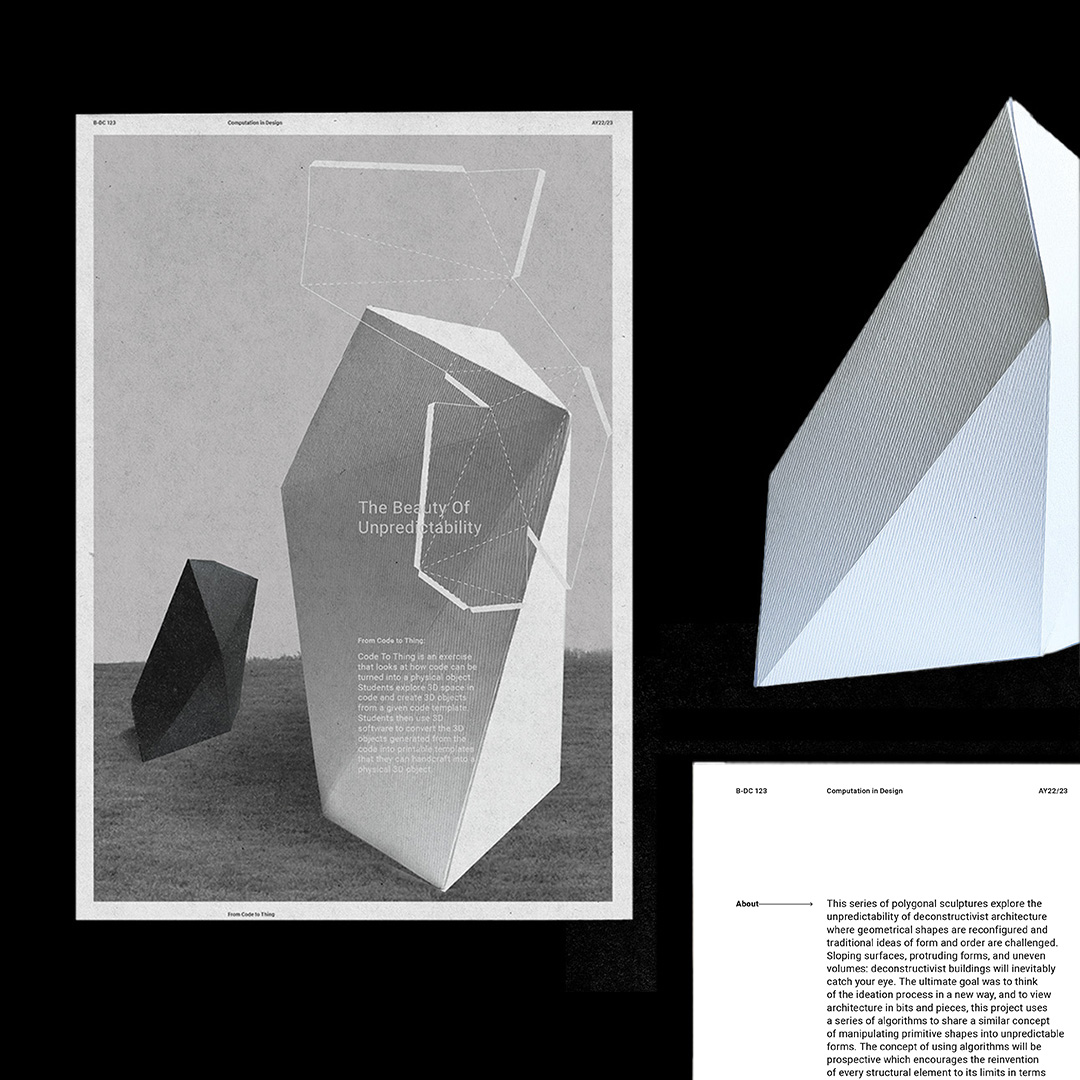
Jo's 'Screen' workshop sparked my interest in the workings of large projection installations. This workshop provided me with a fundamental understanding of projection mapping using minimal code. The theme of 'Other World' guided the conceptualization process between Anna, Junliang, and myself, as we envisioned an inner world that resonated with the audience. Prior to production, I have always been in the habit of developing a narrative. Having a narrative for visual art draws the audience closer to my artwork.
The concept of 'Other Worlds' allowed me to explore the use of metaphors to portray the contrasting emotions of peace and trauma, which we aimed to translate into our visuals. We also incorporated the model-making technique learned from Dhiya's class to create a house model template. By experimenting with different materials, such as mirrors, we were able to enhance the visual experience by creating a synergy between the physical object and the visuals. Overall, this projection mapping workshop provided me with valuable insights into how simple code can be utilized to create immersive visual experiences.
Tools used: Pen Knife, Glue, Foam Board and Projector






Jake's workshop delves into the potential of physical computing in design by exploring how coding algorithms can be translated into intangible experiences. As someone who enjoys participatory and interactive exhibitions, I find it meaningful to engage with artwork in this way. I have always been interested in exploring various mediums to communicate ideas, and physical computing provides the opportunity to communicate with different mediums. During the workshop, our task was to create an interactive mini-installation that tells a story.
My team, consisting of Junliang, Anna, and myself, decided to explore the concept of 'abusing AI' in an interactive way by using sensors and behaviors to generate psychedelic visuals on our editor. The workshop was engaging as we used basic electronics and a microcontroller to trigger abstract visuals. It provided us with a good insight into using sensors to create unique visuals and fostered collaboration and communication in the creation of our mini sensory installation.
Tools used: Arduino Sensor Kit, Foam Sphere and Pen Knife


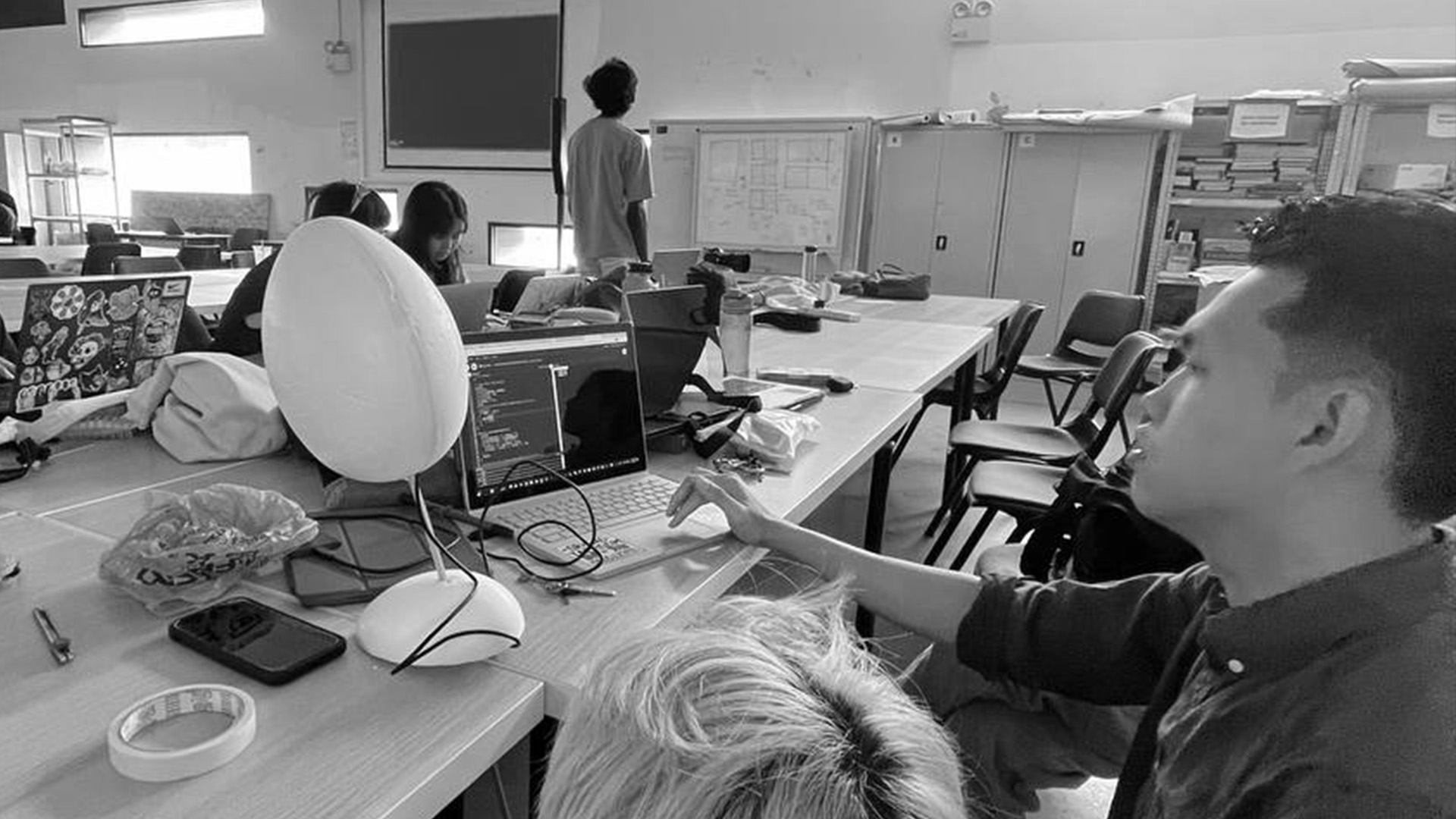



"Designers have a responsibility to ensure that machine learning is not only smart, but also respectful of human values such as fairness, transparency, and accountability."
by Josh Lovejoy






What have I learned over the course of this semester? Through my participation in a series of workshops, I have discovered that coding algorithms can unlock a multitude of possibilities. Beyond the creation of unique artwork and expression, these algorithms have the potential to enrich our lives by providing us with new and exciting experiences. As such, the integration of coding algorithms into the design process has the potential to transform the way we interact with technology, art, and the world around us.
Some of my most interesting findings this semester are? Among all the workshops I participated in, I found Jo's workshop to be the most intriguing. It was fascinating to learn how projection mapping can be achieved through simple coding. This opened my eyes to the endless possibilities that technology can offer when combined with creativity. I have always been interested in projection installations, and this workshop gave me valuable insights into how to conceptualize a narrative and create a participatory visual experience. It was inspiring to see how technology can be used to transform physical spaces and create immersive and interactive environments that engage the audience. Overall, the workshop was a great learning experience and provided me with new tools and ideas to incorporate technology into my artistic practice.
What are some of my achievements? Participating in this workshop has been a great achievement for me, as I was able to acquire new skill sets and gain hands-on experience with computational thinking. The opportunity to explore different tools and techniques has expanded my creative thinking and provided me with a fresh perspective on how to approach my future projects. I have always been interested in creating works that allow me to interact with my audience, and the computational techniques I learned during the workshop will undoubtedly enhance my design process. Being able to use technology to create immersive and interactive experiences opens up a new realm of possibilities in my artistic practice, and I am excited to apply these new skills to create engaging works that push the boundaries of what is possible. Overall, the workshop has been an enriching experience, and I am grateful for the opportunity to learn and grow as an artist.



